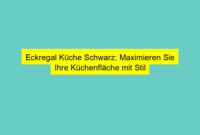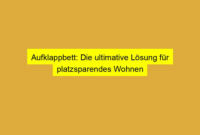Introduction
Hello, Sanctuaryvf Friend! Today, we delve into an architectural marvel that represents the heart of European financial stability – the European Central Bank Building in Frankfurt. This prestigious institution plays a pivotal role in shaping the economic landscape of Europe and has become a significant symbol of unity and resilience. Join us as we explore the mesmerizing characteristics and unique features of this monumental structure.
The Historical Significance of the European Central Bank
🏛️ Since its inception, the European Central Bank (ECB) has played a central role in the economic development of the European Union. It was established in June 1998, with the primary mission of maintaining price stability within the Eurozone. The construction of its magnificent headquarters in Frankfurt stands as a testament to the importance and purpose of this institution.
The Architecture and Design
🏢 The European Central Bank Building forges a harmonious blend of modernity and sophistication. The renowned architectural firm Coop Himmelb(l)au was entrusted with the task of envisioning and executing this iconic structure. The skyscraper itself stands 185 meters tall, symbolizing the bank’s grandeur and presence on the global financial stage.
The Strengths of the European Central Bank Building
🌟 The European Central Bank Building is not only a symbol of financial stability but also a testament to sustainability and innovation. The strengths of this architectural marvel lie in its:
1. Environmental Friendliness
🌿 Designed with sustainability in mind, the ECB Building incorporates numerous green technologies such as solar panels, rainwater harvesting systems, and energy-efficient ventilation. These features enable the building to minimize its carbon footprint and contribute to a greener future.
2. Iconic Twin Towers
🏗️ The two interconnected towers that constitute the ECB Building are a stunning example of modern architecture. With their breathtaking glass facades and curved contours, they create an imposing silhouette against the Frankfurt skyline, leaving a lasting impression on anyone who beholds them.
3. State-of-the-Art Facilities
💼 Housing approximately 3,000 employees, the ECB Building boasts world-class amenities and facilities. From fully equipped conference rooms to cutting-edge technological infrastructure, the workspace within this architectural masterpiece fosters an environment conducive to optimal productivity and collaboration.
4. Symbolic Significance
🌍 As the headquarters of the ECB, the Frankfurt building serves as a symbol of European economic unity and resilience. Its construction signifies the unwavering commitment of European nations towards monetary stability and the pursuit of common economic goals.
5. Impressive Public Spaces
🌳 Beyond its functional purpose, the ECB Building offers a range of public spaces that enrich the surrounding urban environment. With its beautifully landscaped gardens and inviting plaza, the building extends a warm welcome to locals and visitors alike, providing a serene and engaging retreat in the bustling cityscape.
6. Technological Innovation
🌐 The ECB Building embraces cutting-edge technology to facilitate seamless communication and collaboration among its staff. State-of-the-art video conferencing systems, advanced security measures, and high-speed internet connectivity ensure the smooth operation of the institution and encourage fruitful international cooperation.
7. Economic Impact
💰 The presence of the European Central Bank in Frankfurt has contributed significantly to the city’s economic growth. The institution attracts a myriad of businesses, creating a bustling financial district and fostering a vibrant local economy through the provision of employment opportunities and a thriving service sector.
The Weaknesses of the European Central Bank Building
🌟 While the European Central Bank Building stands as a testament to architectural prowess, it also has some weaknesses that warrant consideration:
1. Security Concerns
🔒 Given the institution’s significance and the sensitive nature of its operations, the ECB Building faces constant security challenges. The need to strike a delicate balance between openness and safeguarding the institution’s integrity poses ongoing security concerns.
2. Accessibility Constraints
🚧 The sheer size and complexity of the ECB Building can present challenges in terms of accessibility for individuals with disabilities, requiring continuous efforts to ensure universal accessibility and inclusivity within the premises.
3. Financial Burden
💸 The construction and maintenance costs associated with such an architectural marvel are substantial. The ECB Building’s significant financial implications put pressure on the institution’s budget, and its ongoing upkeep necessitates careful financial planning.
4. Strain on Infrastructure
🚇 The concentration of thousands of employees within a single building places strain on local infrastructure, particularly regarding traffic and transportation. Efforts must be made to mitigate these challenges and ensure the smooth flow of people and resources in the surrounding area.
5. Limited Flexibility
🏗️ Due to its specific design and purpose, the ECB Building may face challenges in terms of accommodating future organizational changes or expansions. Adapting to evolving needs and technologies may require careful strategic planning and potential infrastructural modifications.
6. Cultural Impact
🏭 Some critics argue that the ECB Building’s imposing modern architecture disrupts the harmony of Frankfurt’s traditional cityscape. They contend that the juxtaposition of contemporary design against historic landmarks may impact the city’s cultural fabric.
7. Public Perception
🙌 Lastly, the ECB Building’s opulent appearance and grandeur may create a perception of detachment from the everyday struggles of ordinary citizens. This perception may hinder effective communication and public outreach initiatives, necessitating efforts to bridge this divide.
An Overview of European Central Bank Building Frankfurt
Parameter |
Details |
|---|---|
Location |
Frankfurt, Germany |
Architect |
Coop Himmelb(l)au |
Height |
185 meters |
Year of Completion |
2014 |
Primary Purpose |
Headquarters of the European Central Bank |
Frequently Asked Questions (FAQs)
1. Is the European Central Bank Building open to the public?
The ECB Building is not open to the general public. However, guided tours can be arranged for organized groups upon prior request.
2. Can visitors access any part of the ECB Building?
Visitors are restricted to the public spaces surrounding the building, such as the gardens and plaza. Access to the main interior areas is primarily limited to authorized personnel.
3. Are there any souvenir shops or cafes within the ECB Building?
No, there are no souvenir shops or cafes inside the ECB Building. However, there are numerous eateries and shops in the surrounding area.
4. How can I reach the European Central Bank Building using public transportation?
🚇 The ECB Building is conveniently accessible by various means of public transportation. Visitors can use the subway system (U-Bahn) or bus services to reach nearby stations, such as Willy-Brandt-Platz or Ostbahnhof.
5. Are there any hotels or accommodations near the ECB Building?
Yes, there are several hotels and accommodations in close proximity to the ECB Building. Visitors can choose from a range of options to suit their preferences and budget.
6. Can I take pictures of the ECB Building?
While photography is permitted in the public spaces surrounding the building, capturing images of specific restricted areas or interior spaces is prohibited.
7. Are there any cultural events or exhibitions held at the ECB Building?
Yes, the ECB occasionally organizes cultural events and exhibitions, though these are primarily aimed at employees and authorized personnel. Public events may be announced on the ECB’s official website or other channels.
Conclusion
In conclusion, the European Central Bank Building in Frankfurt stands as an architectural masterpiece that represents financial stability, sustainability, and technological innovation. While this iconic structure has its strengths, such as its environmental friendliness and symbolic significance, it also faces challenges, including security concerns and strains on local infrastructure. Despite its weaknesses, the ECB Building remains a symbol of unity and an inspiration for future endeavors in the realm of finance. As visitors explore the vicinity, they cannot help but marvel at the beauty and magnificence of this extraordinary landmark.
We encourage you to explore the rich history and economic impact of the European Central Bank Building firsthand. Witness the legacy of European financial stability that continues to shape our financial landscape. Discover the resilience, innovation, and determination within the wall of this extraordinary structure – a testament to the enduring strength of the European Union.
Closing Words
In these ever-changing times, the European Central Bank Building serves as a constant reminder of the crucial role finance plays in our interconnected world. The pursuit of stability, innovative solutions, and sustainability are essential to shaping a better future. Let us continue to celebrate and support the institutions that drive progress, stability, and unity in our global society.
Disclaimer: This article is intended for informational purposes only. The European Central Bank and its operations are subject to change, and readers are encouraged to refer to official sources for the most accurate and up-to-date information.




